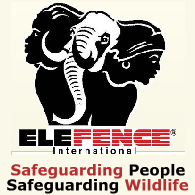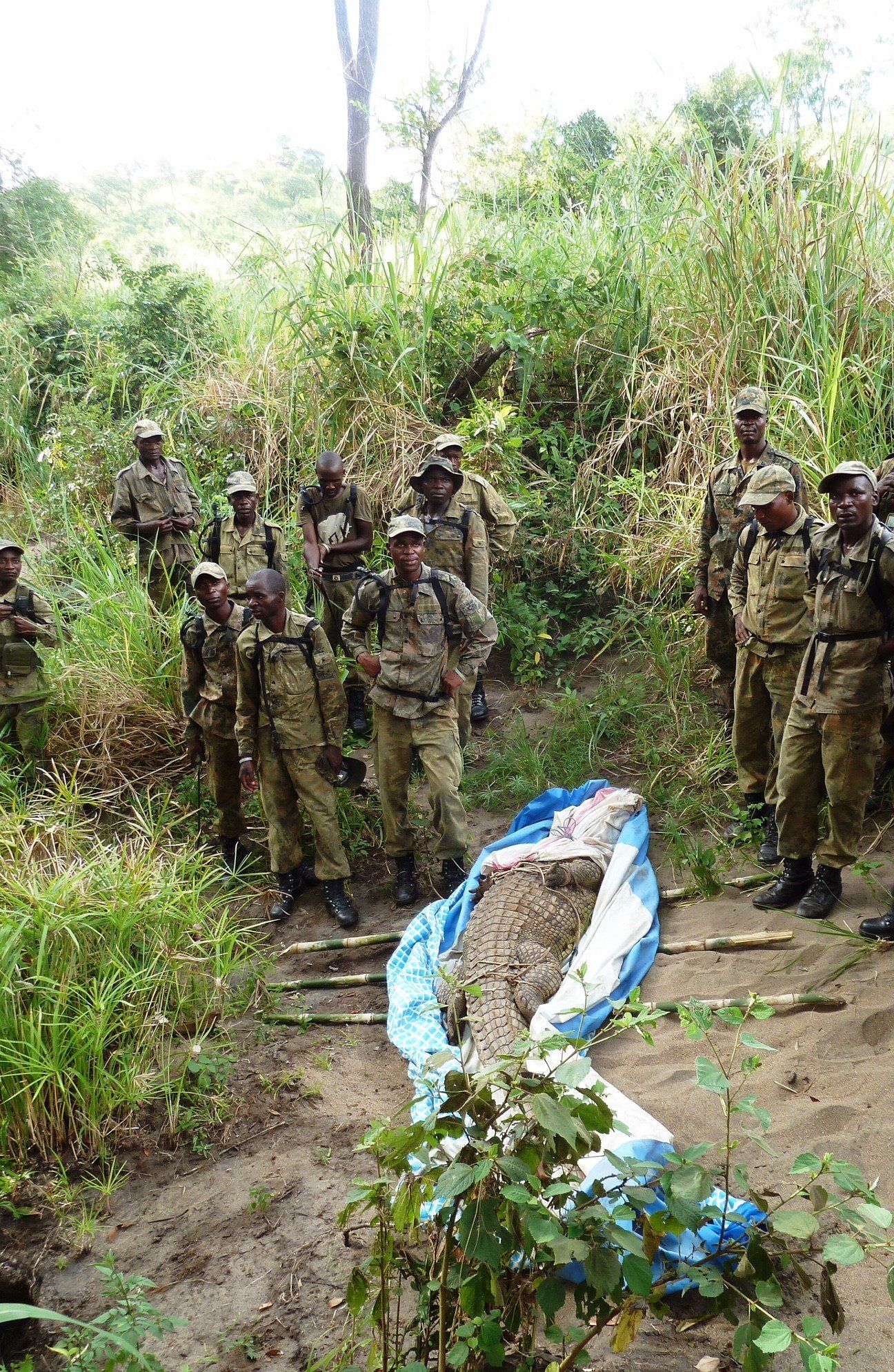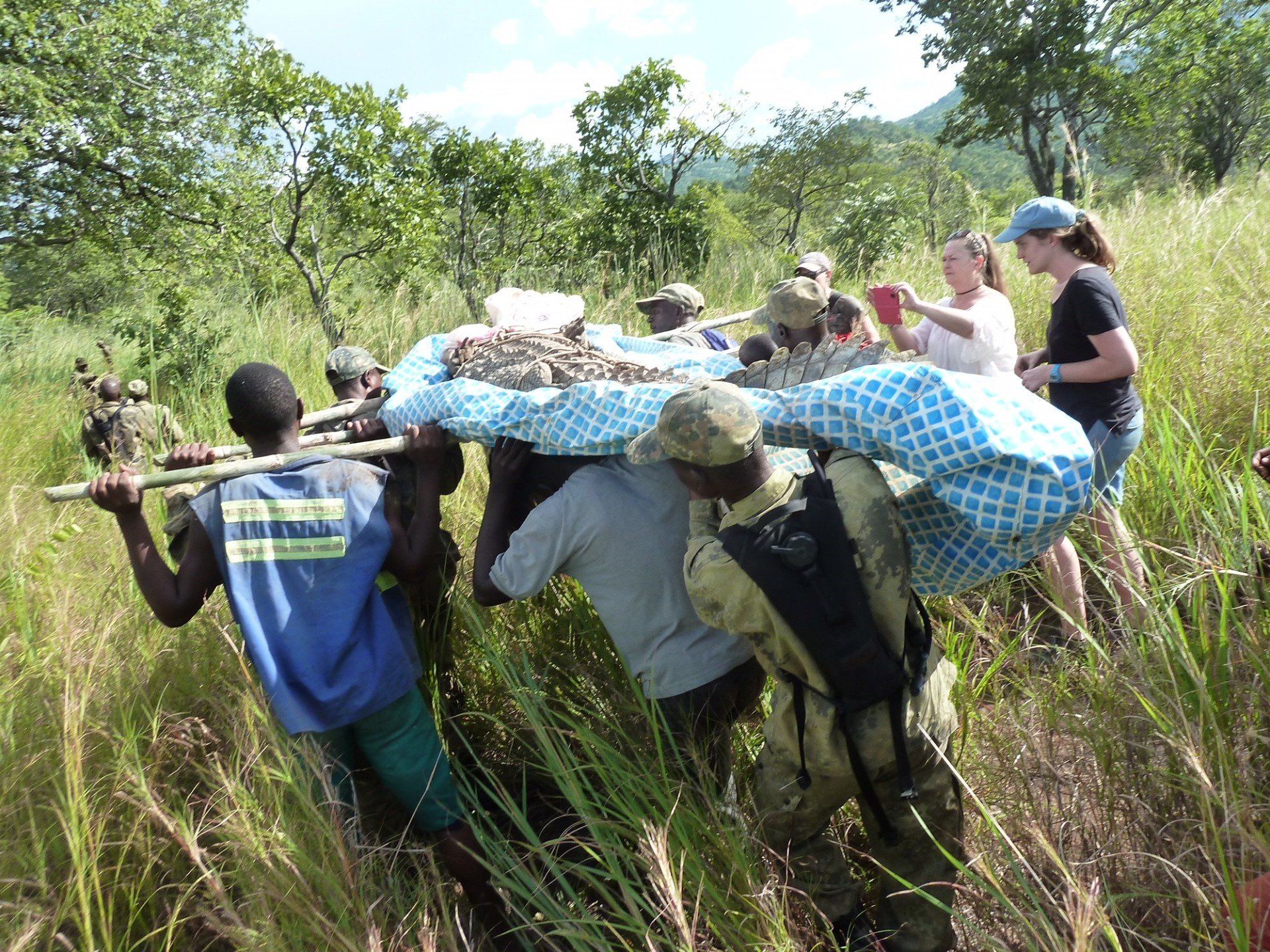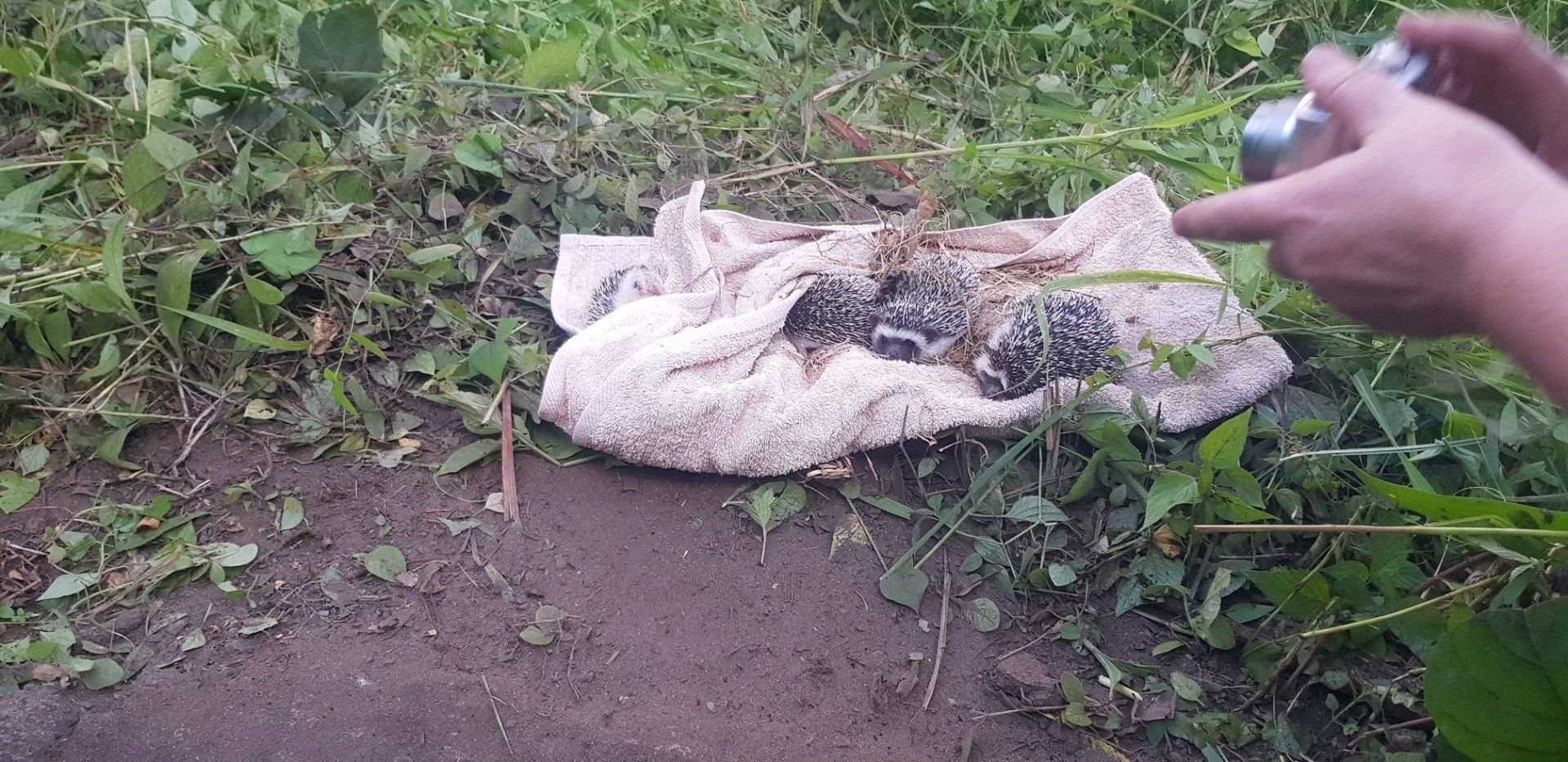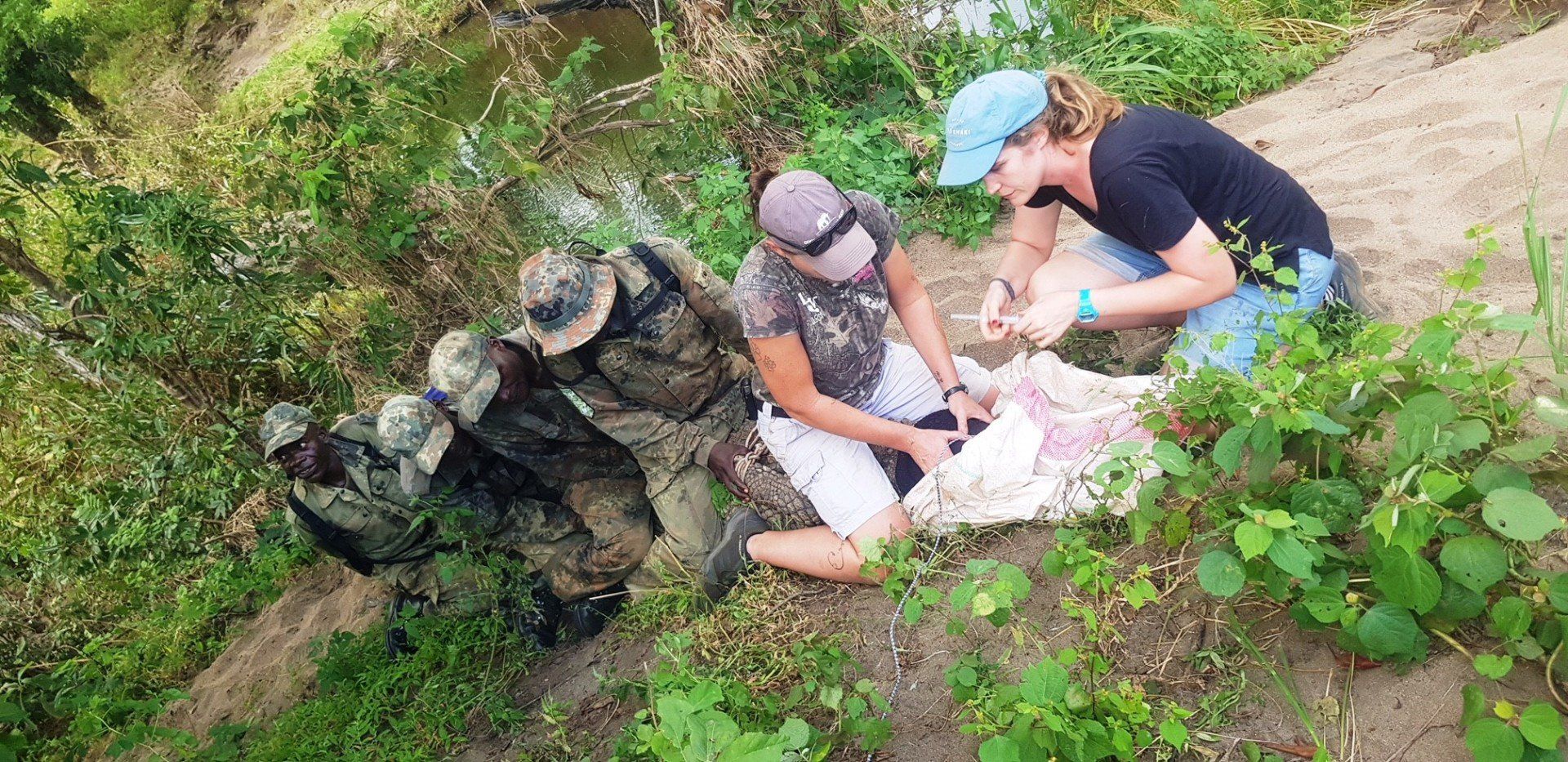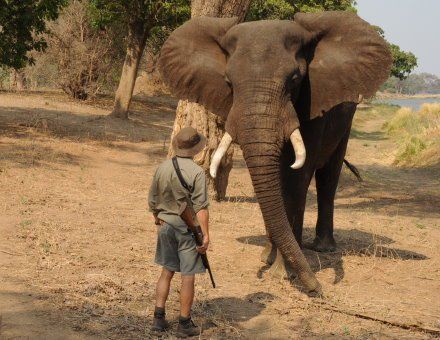WHAT A CROC!
Lynn Clifford • March 25, 2020
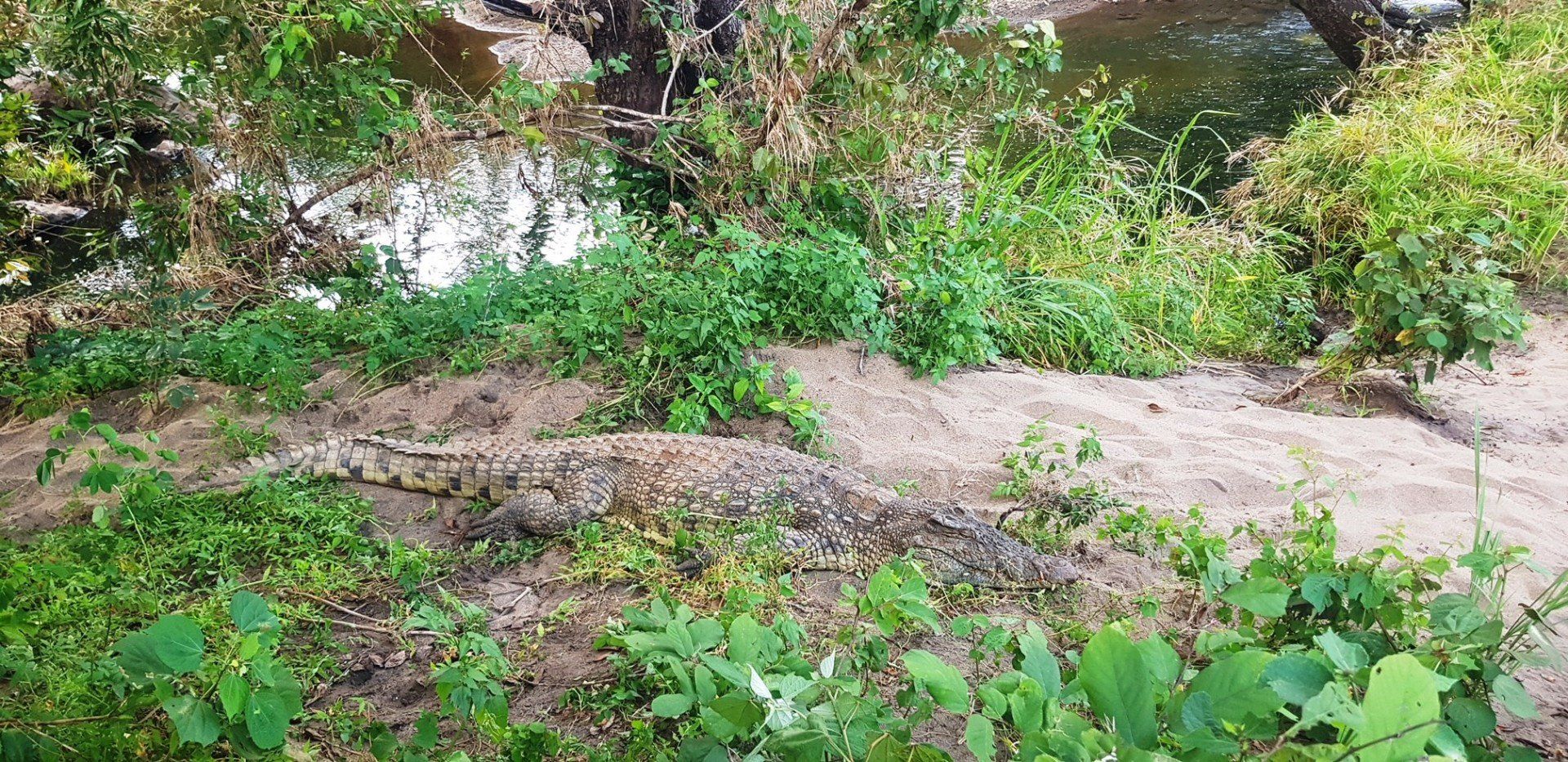
A little update from the Malawi bush.
Last week, the rangers and I heard about a large 8.6 foot female croc that had been in captivity for over 15 years in the capital city of Lilongwe. This croc was at the Lilongwe Wildlife Trust facility that takes care of rescued, distressed wild animals -- then works at releasing the captive animals back to the wild.
I suggested that it might be better for the croc to be released into the Thuma Forest Reserve where we live and work. Thuma had a good spot on a wild river where it could live because our WAG rangers patrol the area for poachers. The Lilongwe Wildlife Trust agreed to allow the rangers and me to transport the croc to Thuma, about 100 miles away.
Days later, we brought the big croc to Thuma. Her name is Bush Dog! (In Southern Africa, crocodiles are called Flat Dogs.)
Since the croc weighed hundreds of pounds, we had to use 2 teams of ten men to carry Bush Dog to the ideal river spot about a mile away from the vehicles.
We released Bush Dog in a shady area, beside a stream close to a natural dam. It would be an ideal place where we hope she enjoys a taste of freedom. A croc can live to nearly100 years and can reach some 19 feet in length!
Recently, we also released 4 baby hedgehogs into Thuma Forest Reserve. They had been hand reared in the city. They were released close to our ranger headquarters camp.
Another "back to the wild" story entailed 3 beautiful African Rock pythons! They were found at one day near the city and brought here to Thuma Forest Reserve.
We have been hand rearing them ever since, including catching and feeding them live rats. Ugh! It was terrible for me to do being an animal lover, but that's what pythons eat.
All three pythons were released at our local spring area and we hope they do well.
Thank you for reading my post from the bush.
Lynn Clifford
Field Manager
Wildlife Action Group
Thuma and Dedza-Salima Forest Reserves
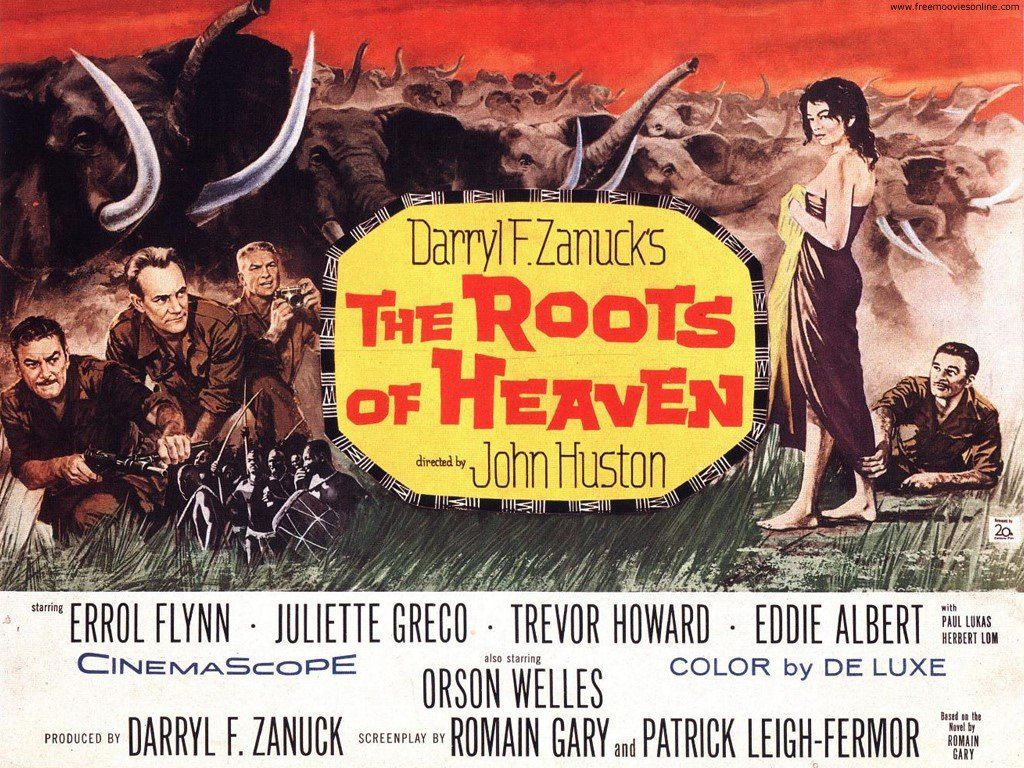
Elefence and The Roots of Heaven How I Got Started on my African Journey By Dick Houston Through the many years of my living and working in Africa, I'm often asked me what set my heart on the continent. Why did I take on the elephant's cause? Like so many obsessions, they begin with real-life heroes and a book. So...... I was 15 years old when I first saw The Roots of Heaven at my hometown theater in Ashtabula, Ohio. It's a classic John Huston movie filmed on location in Africa in 1958. The theme of the movie haunted me enough that I later checked out the book at the local library. The author is Romain Gary. The story revolves around a man named Morel, who had survived a WWII concentration camp. During his ordeal he dreamed of elephants who represented freedom and liberty to him. He made a promise that if he survived the horrors of the concentration camp, he would go to Africa someday to save the elephants from poachers and the ivory trade. I too dreamed of saving elephants, but it seemed an impossible dream for a teenage boy whose family background was made up of blue collar workers and farmers. I remember how hard my dad worked, sometimes 7 days a week as a tool-and-die maker. Such wild dreams of a crazy boy obsessed with getting to Africa seemed beyond the reach of reality. However, I never gave up on the dream, working my way through college to get a bachelors and a masters degree in English and history, later getting a job with an oil company in Maracaibo, Venezuela to save money to eventually take off for Africa. As fate would have it, when I finally made it to Africa in 1967, I crossed paths with the right people who steered me in the right direction -- and I eventually ended up operating small camping safaris across Africa with a British partner. Later, when I was befriended by some of my childhood heroes -- such as the legendary old Kenya game warden, George Adamson of Born Free fame -- I became passionate about conservation. So, in a nutshell, this is how I ended up running overland safaris across Africa. As the years passed in Africa I began to see more dead elephants than living ones. In the late 1980s Kenya's elephant population plummeted from 125,000 to only 14,000. The rhinos in Kenya were no longer seen in the wild. Africa's total elephant population has dropped from 1.4 million to only 350,000 now -- and continuing to decline by 30,000 a year fueled by the Chinese ivory trade. Do the math. I understood enough about elephant family life, their dedication to their young, their lifetime friendships between herd members. So I was sickened by the slaughter. I've seen their carcasses strewn obscenely around the bush, even their heads cut off for the ivory. I've been on anti-poaching treks with rangers and once came across an elephant bull killed only minutes before, his blood dripping into the African earth. I was just as sickened by people who wring their hands and seem to say..."well, bad day for the elephants." I'm a great believer that sometimes the sins of omission are greater than the sins of commission. I thought of the words of the character Morel in The Roots of Heaven: "It is not possible for a free man to catch a glimpse of the great elephant herds roaming the vast spaces of Africa without taking an oath to do whatever is necessary to preserve for ever this living splendor." It doesn't take a stretch of imagination to see what galvanized me to envision Elefence International. My British friend Bruce Lowe -- a partner with Taft Law in Cleveland -- founded Elefence as a charity. Our premier projects in Zambia and Zimbabwe were funded by generous individual donors, as well as major grants from the U.S. Fish & Wildlife, and SeaWorld & Busch Gardens Conservation Fund. They have helped Elefence support anti-poaching rangers with radio communication equipment, radio towers, a school for the rangers' kids, houses for rangers, a holding facility for rescued orphaned elephants, solar water towers for elephants in Hwange National Park, and food programs for hungry kids at villages. Periodically in our Elephant Tales blog, Nic and I will talk about the state of the elephant today, and our Elefence conservation projects with our field partner, Wildlife Action Group in Malawi. And you will actually see on the ground how conservation helps save not only elephants and other wild animals -- but also helps safeguard villagers' ecosystems. The local communities are at ground zero of human-elephant conflicts. (Note the Elefence logo, an amalgam of people and an elephant.) I'm sometimes asked what I think is the most important task for elephant conservation today. My answer is one word: education. You teach the local people how wild places maintain ecosystems -- then, you actively support villagers with conservation projects in the field to secure their day-to-day livelihoods. We can turn the tide to save the wildlife. The people need incentives. We're doing that in Malawi with the fencing project. But time is fast running out for the elephant as human encroachment continues to gnaw at the forests. This is why we are desperate to finish the Dedza-Salima fence to secure the area forever for elephants, and safeguard the people. Certainly the roots of heaven were planted in my own heart of Africa. Dick ** In succeeding posts on our blog, I will share some of these African adventures that meld the past, present, and future.
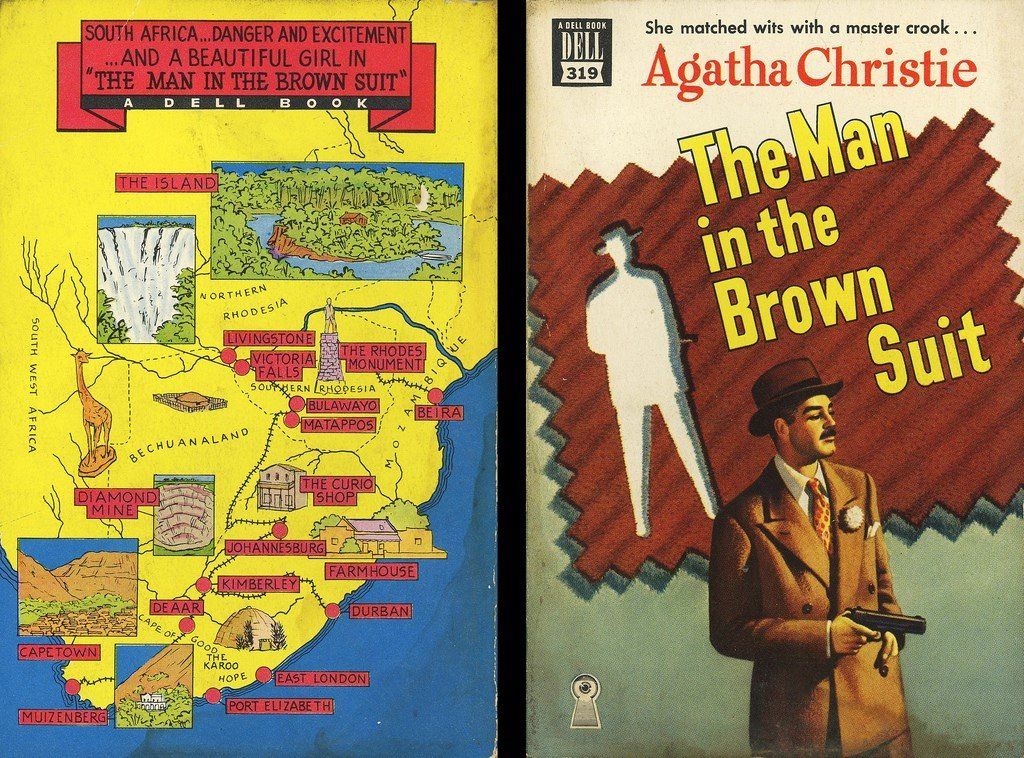
Our ELEPHANT TALES stories will also delve into our safari attic trunk -- to exhume long forgotten treasures of the "old Africa" of yesteryear. In our Safari Attic you will also learn about books that will feed your curiosity about Africa's old days. We will also have links to booksellers that can find books that have long been out of print. And lots more surprises in our safari attic... The Old Hotels: Many of the grand old British colonial Africa hotels were torn down years ago. But the ghosts of the Empire's past still hang out at the grandest old lady of Africa's bygone days: The Victoria Falls Hotel. She still stands proudly at the edge of Victoria Falls -- the greatest waterfalls in the world. Twice as high as Niagara -- and over a mile wide! Here's the story of the old Victoria Falls Hotel in Zimbabwe (formerly Southern Rhodesia) Let's start the story with: AGATHA CHRISTIE AT VICTORIA FALLS HOTEL " The Man in the Brown Suit "
